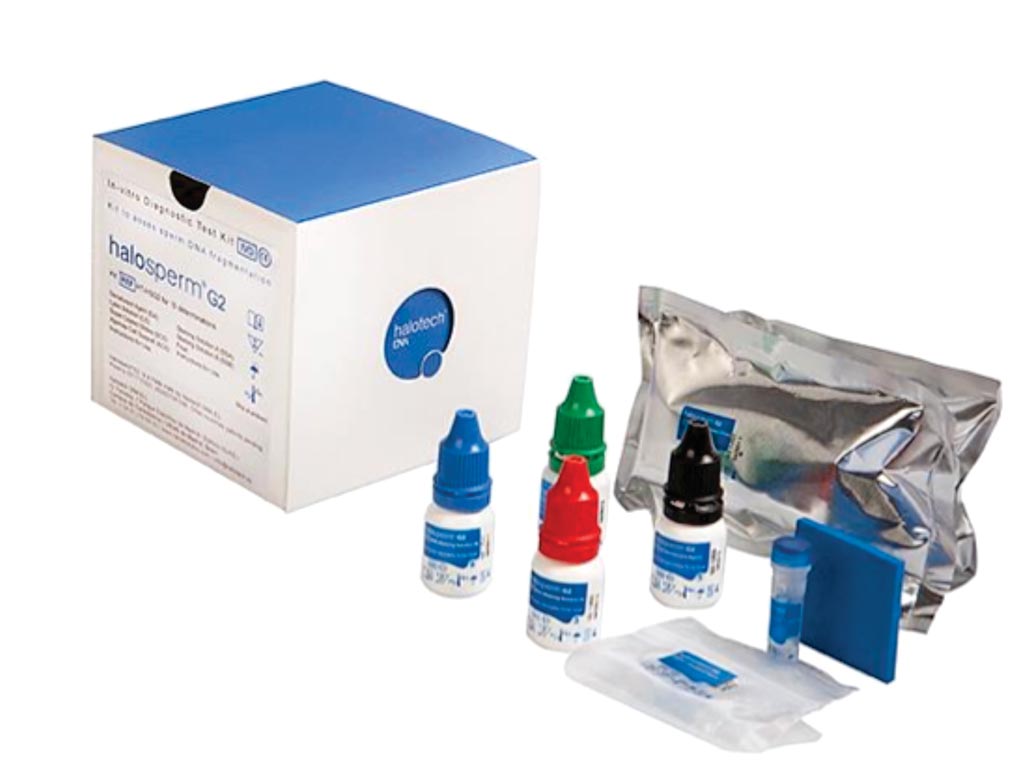Markers in Male Reproductive Impairments Causing Miscarriages
By LabMedica International staff writers
Posted on 21 Feb 2019
Recurrent pregnancy loss, (RPL) affecting 1% to 2% of couples, is defined as ≥3 consecutive pregnancy losses before 20-week' gestation. Women with RPL are routinely screened for etiological factors, but routine screening of male partners is not currently recommended.Posted on 21 Feb 2019
Sperm DNA plays a critical role in placentation, so it is biologically plausible that impairments in male reproductive function could increase the risk of RPL. Recent studies suggest that male partners affected by RPL have impaired sperm quality with reduced total motility and morphology and increased sperm DNA damage.

Image: Halosperm is an in vitro diagnostic kit that allows the measurement of DNA fragmentation in a fast, easy, and reproducible manner, without the need for complex laboratory equipment (Photo courtesy of Halotech DNA SL).
A team of hospital based scientists collaborating with the Imperial College London (London, UK) enrolled 50 men who were partners of women with RPL and 63 men as controls. The controls were slightly younger that the test subjects and were mainly of Caucasian descent. All sperm samples were analyzed within the Department of Andrology, Hammersmith Hospital (London, UK). Sperm morphology was analyzed on Papanicolaou pre-stained slides with Kruger strict criteria.
Semen reactive oxygen species (ROS) were measured with a validated in-house chemiluminescent assay. Each sample was gently mixed immediately before taking luminometer readings. DNA fragmentation was measured with the validated Halosperm method. Morning blood samples were analyzed for serum luteinizing hormone (LH), follicle-stimulating hormone (FSH), estradiol, testosterone, and sex hormone–binding globulin.
The scientists reported that total sperm motility, progressive sperm motility, and normal morphology were all reduced in the RPL group versus controls. Mean ±SE morning serum testosterone (nmol/L) was 15% lower in RPL than in controls (controls, 19.0 ± 1.0; RPL, 16.0 ± 0.8). Mean ±SE serum estradiol (pmol/L) was 16% lower in RPL than in controls (controls, 103.1 ± 5.7; RPL, 86.5 ± 3.4). Serum luteinizing hormone and follicle-stimulating hormone were similar between groups. Mean ±SE ROS (relative light units (RLU)/sec/106 sperm) were 4-fold higher in RPL than in controls (controls, 2.0 ± 0.6; RPL, 9.1 ± 4.1). Mean ± SE sperm DNA fragmentation (%) was 2-fold higher in RPL than in controls (controls, 7.3 ± 1.0; RPL, 16.4 ± 1.5).
The authors concluded that the data suggested that male partners of women with RPL have impaired reproductive endocrine function, increased levels of semen ROS, and sperm DNA fragmentation. Routine reproductive assessment of the male partners may be beneficial in RPL. The study was published in the January 2019 issue of the journal Clinical Chemistry.
Related Links:
Imperial College London
Hammersmith Hospital













